Pruning currants in the fall
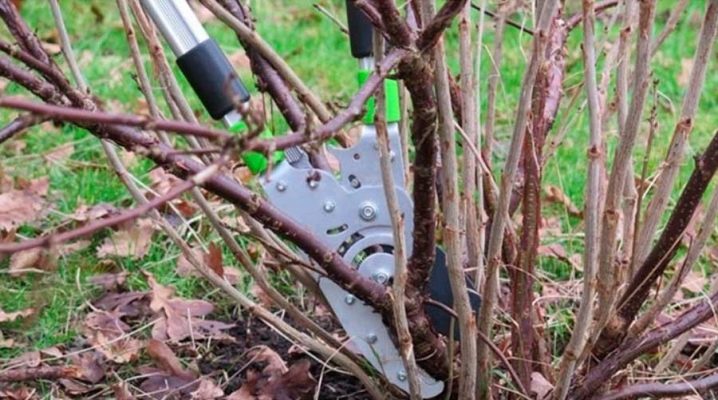
Ornamental gardens are becoming more and more popular, places where there is no goal to collect a large harvest, but there are high aesthetic demands. However, at all times there were summer residents and gardeners who tried to combine this and that as much as possible. In areas where each bush was beautiful and did not stand out from the overall picture. For example, currants delighted with poured fruits and exemplary shape. And timely autumn pruning contributes a lot to this.
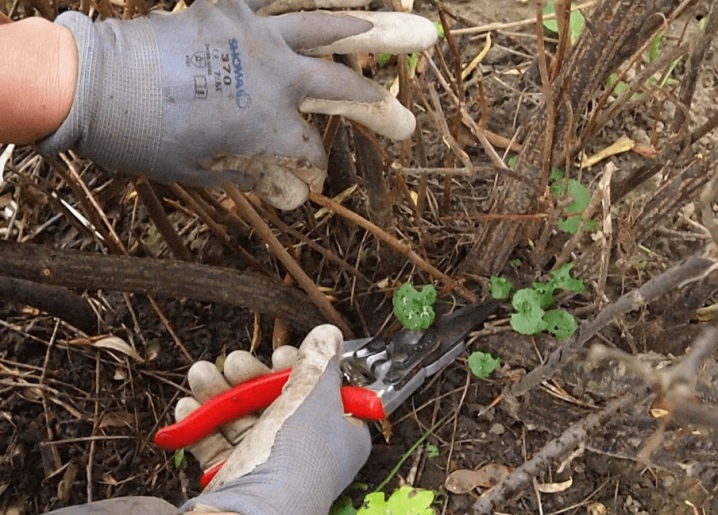
Why do you need it?
Currant is not the most demanding plant, it is really unpretentious and often takes root where it should not grow. Even in abandoned areas, fertile shrubs can be seen that grow and do their job, despite the lack of maintenance. This only suggests that the currant is a grateful plant, and that relatively small list of procedures that it needs will have an equivalent answer. To the delight of the gardener, of course.
Usually, currants give a good start, a quick harvest, which impresses the owners of the site.
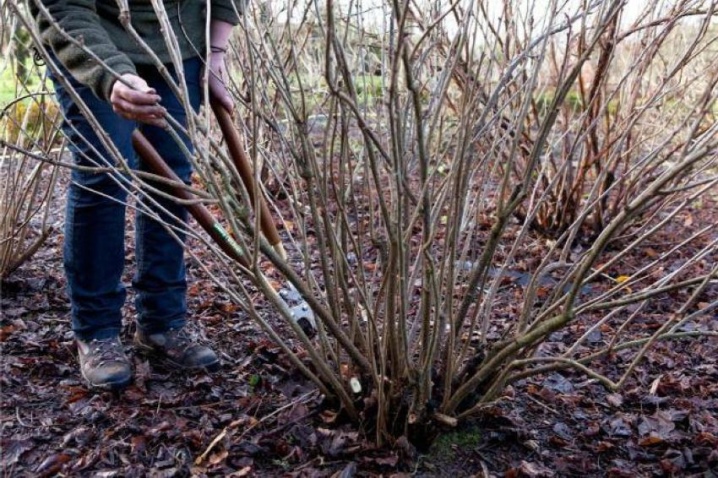
But after 3-4 seasons, the yield drops, and not the most experienced gardeners begin to panic. Most likely, the matter is precisely in the absence of pruning. Moreover, this reaction is found in both red and black currants.
The explanation is logical: generative (one might say, fertile) buds appear only in young branches, whose age is up to 5 years. Perennial branches actively take up food, but do not give fruit. You should get rid of such branches. As well as from dried branches, which do not allow promising shoots to develop normally.
Pruning rejuvenates the bush and prolongs its life by about 5 years. Then new interventions will be required. In total, currants can serve 20-30 years, as if there is something to fight for.

Tasks that pruning solves:
- the affected, diseased parts of the bush are removed;
- the increase in productivity, the total number of berries;
- the growth of new shoots resumes;
- nutrition is optimally distributed;
- the period of fruiting of the bush as a whole increases;
- the bush takes on an attractive shape.
It is obvious that this procedure is useful and multifunctional. Pruning is carried out not only in the fall, but also in the spring.
Despite the qualitative arguments about both pruning, the debate about which one is really needed does not subside.
But the truth is always in the middle. And if you do pruning correctly, then at any time it will undoubtedly be effective.
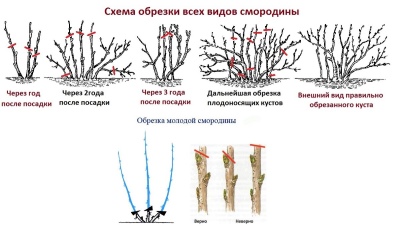
Timing
All summer long, the currant bush is actively developing, and as a result, new shoots appear. Some of them are very productive, but there are also unproductive ones. They will only obscure useful branches, hindering their development. That is why, before the onset of winter, the bush must be rid of this ballast, and this must be done before the onset of frost.... It is necessary to wait until the leaves fall, the sap flow stops. So, the average period in Russia, suitable for cutting currants in the fall, will be October (middle lane).
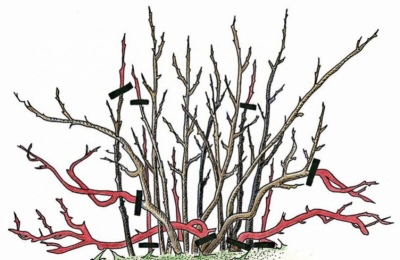
Cropping by region
- The approximate period of freezing of the soil in the Moscow region - mid-November, which means that at the end of October it is already necessary to prune. Half a month will be enough for the plant to prepare for wintering.
- In the Leningrad region temperatures are slightly different, so you can cut the bushes in mid-October.
- In Siberia Temperature drops, which alternate between warming and cooling, have become commonplace. And if you listen to the experts, then at the beginning of September the bushes can be cut off.
- In the Urals this is also worth taking care of in the first month of autumn.
In order not to be mistaken with the cutting time, you need to cut one shoot. If juice is still secreted from the wound, the pruning will have to be postponed for about a week.
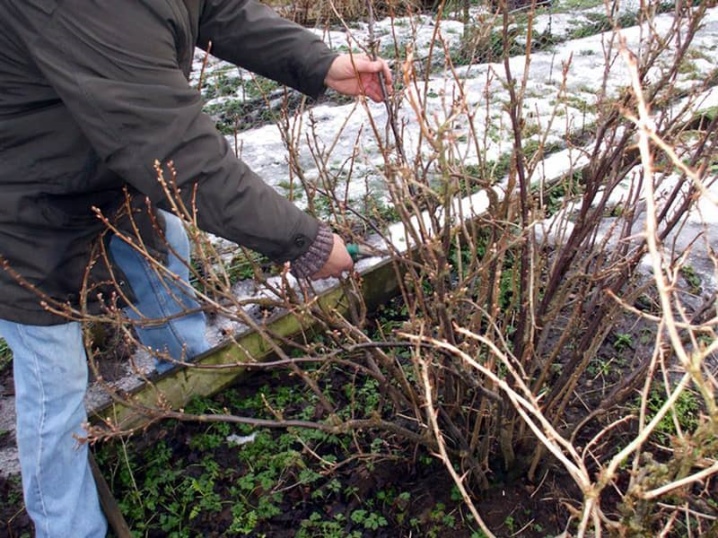
For many gardeners, the lunar calendar has become a sure reference point in the affairs of gardening and gardening.
It is worth recalling that you need to look at the current year, the dates will be different.
Pruning, according to the calendar, is recommended for the waning moon (or it may be in the 3rd or 4th phase). At this time, the cell sap goes down to the roots.
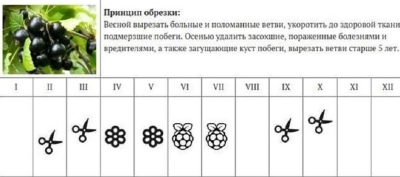
Step-by-step pruning schemes
Now about how exactly the cropping is carried out. It can be different, the first may well be pre-landing... Alas, she is often forgotten, but in vain. Currants are also planted in the fall, about a month before frost. On the day of planting, the tops of the shoots are cut off from the seedling. In the end, all branches should have 2-3 buds for vegetation. Why is it needed - so that at the end of the first year of life, 5-6 shoots appear at the bush.
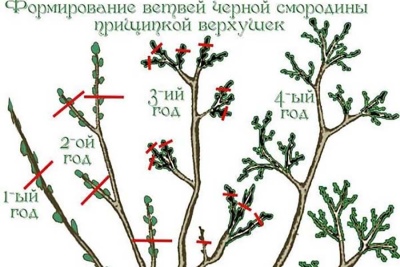
Sanitary
About a month before frost, the currants will go into a dormant state. And at this time, it needs to be cut using a high-quality and safe tool, following the instructions.
What tools will come in handy:
- secateurs - copes with thin twigs and middle-aged shoots;
- garden knife - leaves even cuts, but works exclusively with thin branches;
- hacksaw - has small teeth, it is used to cut thick, already old or just mature branches;
- delimber - equipped with elongated handles, it is convenient to use it if it is difficult to get to the branch;
- brush cutter - cuts any branches, copes well with the formation of a bush.

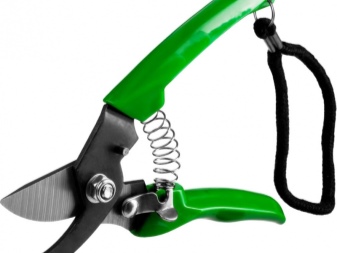
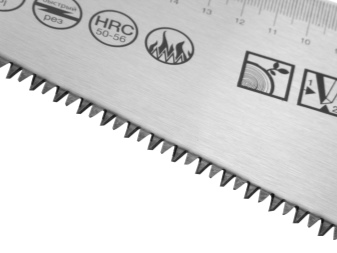
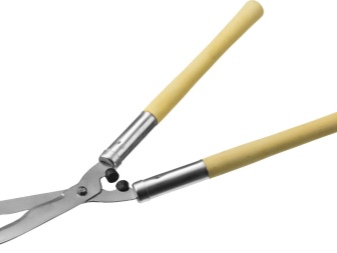
All tools before work you need disinfect alcohol composition.
And it doesn't matter if the pruner was borrowed by a neighbor or it is his own tool - before each new operation, it is disinfected.
The rules are almost surgical, which is understandable: only a sterile instrument will not harm the plant. And a dirty one can easily "reward" a bush with an infection or a fungus.
So, the tools are found, ready, you can start sanitary pruning.
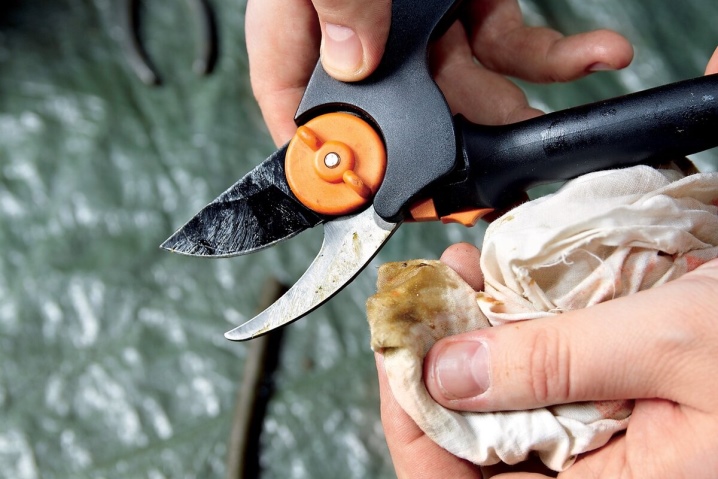
Sanitary pruning is 4 big steps.
- Step one... Dried and diseased branches are removed from the plant. You need to be ruthless to them, they prevent the bush from developing.
- Step two. Cut out those shoots that did not manage to develop over the summer, they remained green. Alas, these branches are not promising.
- Step three. Remove branches that are closely intertwined or grow from the middle of the bush, as well as those that are stubbornly lying on the ground.
- Step four. Remove deformed processes, sick, eaten by a pest.
Practically medical manipulations have to be done, but that's the way it is.
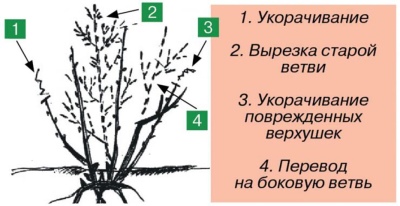
Rejuvenating
The goals of this procedure are different, it is no longer about how to carry out prevention, how to finish seasonal care, but rather about resuscitation of the bush. As already noted, currants grow and develop cyclically. Pleases with a plentiful harvest in the first years, and then fruiting dies out.
Many even wave their hand at the plant, believing that it is sick with something and nothing can be fixed.
Others (fortunately, there are more of them) know how to properly cut currants and give them a new life. Or rather, how to rejuvenate a bush.
3 stages of anti-aging pruning.
- Remove all branches that are more than 5 years old. It's a pity, but their life path is over, it's time to give way to young shoots. For black currants, the lifespan of the shoot is 5 years, but for red and white currants it is 7 years.
- All shoots of a given year shorten by one third.
- Cut off the pagons on the plant, who are over 3 years old.
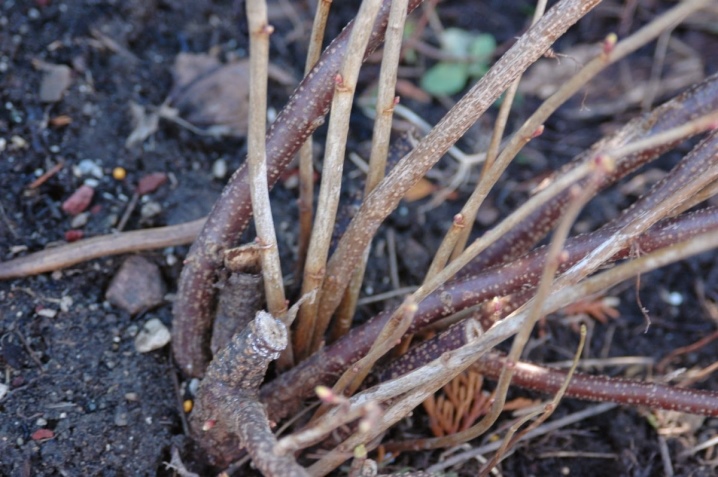
These two trims, sanitary and anti-aging, are considered a must. But, like the pre-planting one, there are a couple more species that also require execution according to the rules. For example, maintaining a bush. With this pruning, you will have to cut out the central branches, which will add light to the shrub. If there are not very many fruiting pagons, the shoots of the current year can be removed.
Attention! When maintaining a bush, you should not get carried away with thinning. It should be moderate.

Cutting out many central branches in one go can stress the plant. Not everyone knows about this, but many face the consequences of such actions. A plant under stress is sick for a long time, it may die, it becomes very vulnerable.
There is also a lot of confusion among novice gardeners regarding pruning a bush by years. They know that there is a difference between procedures with one-year-old currants and those that require rejuvenation.
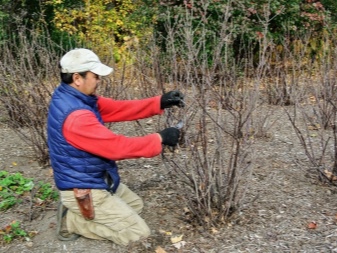
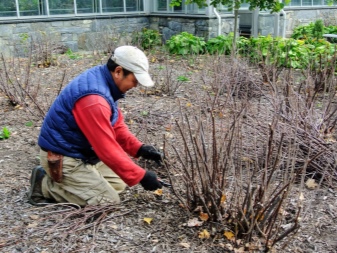
How to prune a bush by years.
- First year. The branches are made shorter, there are sprouts of 15 centimeters.
- Second year... 5 of the most persistent and strong shoots are selected, the rest are cut out at the root. At this point, it is important to correctly lay the foundations for the subsequent formation of the bush.
- Third year. The branches of the first and second years are not touched. Of the new shoots, 5 of the strongest are left. But only those that do not grow inside the bush. Other shoots of the current year are cut off at the base.
- Fourth year. The actions of the previous year are repeated.
- Fifth year. It's time for rejuvenating pruning. Old branches with a minimum of berries are removed, removed under the root, which will stimulate the growth of new shoots.
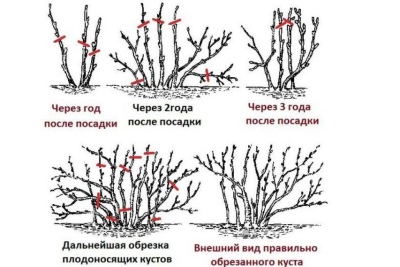
When pruning, the peculiarities of currant species are always taken into account. So, if black begins to bear fruit on last year's shoots, red and white - on the year before last.
The fruiting zone of the black species covers the entire length of the branches, and the white and red ones - the upper half.
Finally, black yields 3-5 years, red and white - a couple of years longer. And then there is the golden currant, which is considered to a greater extent to be an ornamental species. But the rules applicable to white and red currants apply to caring for her.
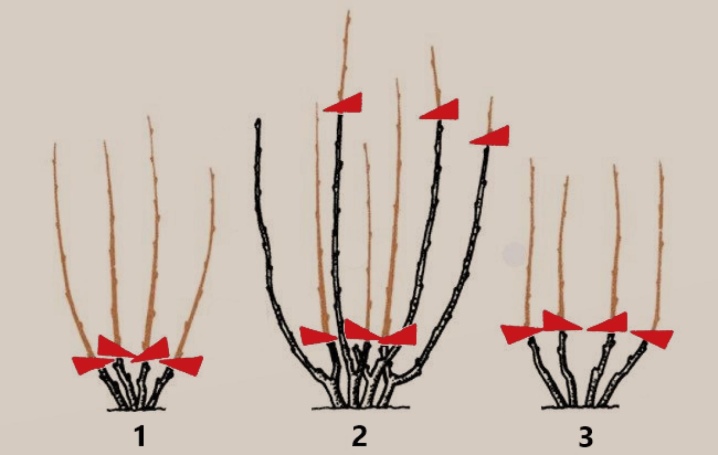
Tips for Beginners
The following are tips to help young site owners not get lost in the difficulties of caring for shrubs.... Perhaps they will be useful to those who have been growing currants for several years and want to replenish their knowledge.
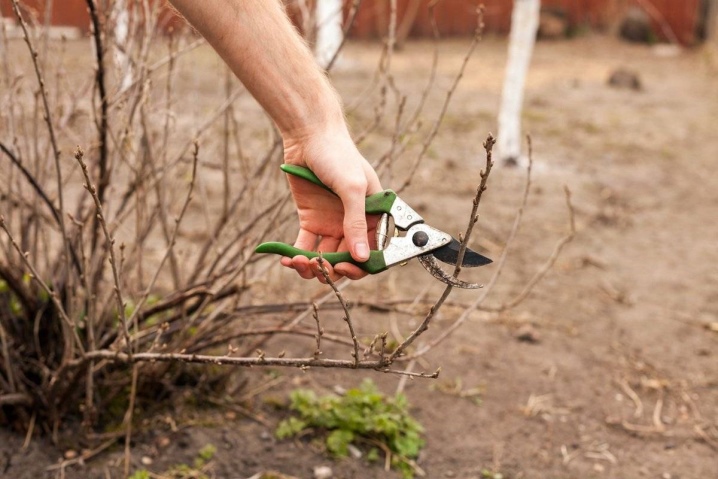
16 tips for pruning a currant bush.
- After trimming, it is imperative to process the slices. Otherwise, the infection will penetrate into fresh wounds, and the bush will have a hard time. Before processing, they are waiting for the end of the release of juice, and after drying, you can proceed. The cuts are processed with garden varnish, which consists of rosin, wax, propolis and turpentine.
- Pruning at the wrong time of the year is still unlikely to kill the plant. Currants are quite tenacious, especially young ones. But if you do this from time to time, the bush will have no chance.
- As for the weather, it is better to cut out extra branches on a day when the weather is mild and the temperature is above zero. No rain or strong wind.
- Before work, you need to checkwhether the blades of the tools are well sharpened. If not enough, you will have to undermine.
- If there is no tool yet, but you plan to buy it, it is advisable to take a knife or pruning shears, scissors with brightly colored handles... Also, the holder should not slip in your hand. A similar tool is easier to find in the grass, in thickets.
- If you have to deal with an old shrub, relatively even neglected, which has not been cut for 10 years, you need to be careful. The new owners try to surround him with care, sometimes with the prefix "hyper". If a large number of branches are removed from such a shrub at once, then the yield of currants will definitely decrease. For a plant, this is stress. It doesn't matter if pruning occurs in autumn or in spring.
- An aging bush is always spreading, its shape is irregular, sloppy. To form a much more acceptable type of bush, you first need to remove those branches that prevent the growth of new ones. And the rest will be cut next year.
- Method "one third", which, without exaggeration, many gardeners use, really works. It is not always as effective as possible, many factors affect, but you can try. It consists in the fact that only a third of the total mass of shoots is removed at a time.Moreover, this method is not bad for the long term.
- In anti-aging pruning, a mandatory moment is the release of the middle of the bush.... It is necessary to thin out this part so that air can circulate freely between the branches. And the illumination of the plant will improve.
- Why you need to remove branches that lie on the ground: in the summer they do not have enough light, they bear little fruit. Someone believes that such branches add aesthetics to the bush, make it so weaving on the ground (photo shoots against the background of these plants are fashionable), but for the culture itself, the presence of such branches is an obvious disadvantage.
- An old bush can be brought to an optimal state in 3-4 years, it will not work earlier. But there is no need to rush, it is better than stressful to bare the entire bush and wait to see if it "gets out".
- Some professionals are close to carrying out pruning immediately after harvest.... There are indeed advantages: the branches get a lot of light, which means photosynthesis of new shoots will start. Internal branches after such a procedure grow intensively, which will affect the better shaping of the bush. The risks of fungal infection are reduced.
- If it is noticed that the bush has lost its former fruiting, it may be enough to cut 2 or 3 skeletal branches, just under the root... Space for new ones will be freed up.
- Radical rejuvenation - there is such a method too... But this applies to bushes that are at least 8-10 years old. All currant branches are cut to the base, the places of the cuts are coated with garden varnish. The soil around the stumps is sprinkled with humus, and tiny (about 3 centimeters) stumps are also sprinkled with it. There is a risk of root freezing, but in order to reduce it, you need to mulch the bush residues with sawdust or straw.
- If you want to get larger and sweeter berries, the method of growing currants on a trellis is used. On seedlings, after planting, all shoots are cut to 5 cm (growth buds are transformed into fruit buds). Branches close to the ground are cut; only the main shoot should not be touched. If the lower branches are removed regularly, the bush in height will be within a meter with a small, maximum one and a half meters. In subsequent years, molding is carried out: basal shoots are cut out that are close to the ground. The bush becomes almost columnar. The final harvest will be less, but the berries themselves are tastier and larger.
- Pruning on a trunk forms a mini-tree out of currants. You need to choose one powerful shoot, which will become the trunk. Other branches are removed. It is shortened to a meter or even a little less than a meter; 3-4 upper buds are left to form the crown. The lower part of the shoot is covered / put on in a rubber tube. Any suitable support is placed. Lateral shoots are pinched after 3-5 leaves. In the second year, new layers are pinched. In the third year, the currant already resembles a spreading tree.
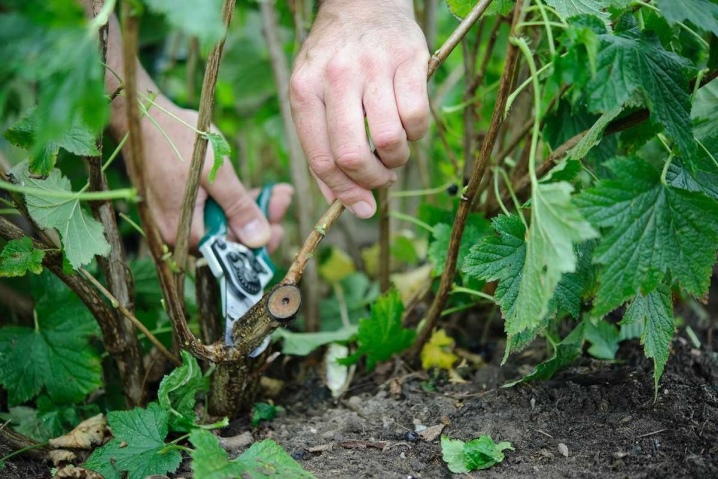
But in addition to all that has been said, knowledge is also needed about caring for a bush immediately after pruning. The work, albeit not the most troublesome, continues.

Further care
After all the trimming manipulations, you need to update the trunk circle. The area around the bush is freed from fallen leaves, old mulch is removed. The collected items are either sent to compost or burned. After that, the earth is gently loosened (with a hoe or even a pitchfork), but a little further from the bush - it is important not to damage the root system.
Loosening protects the soil well from freezing in winter.
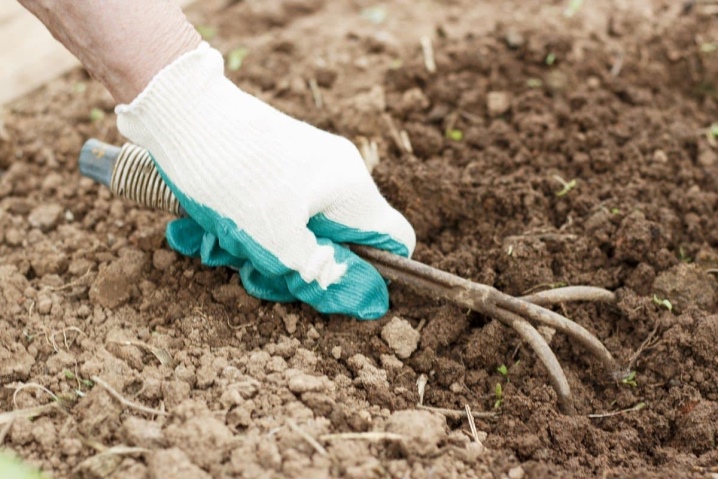
What else is included in the system of caring for pruned bushes.
- Watering... After intensive fruiting, the bushes become sensitive to a lack of liquid in the ground. If watering is scarce, this will not affect the future harvest in the best way. If the autumn turned out to be dry, correct, not scary watering will help the bush to endure the winter easier. Dry autumn is a reason to regularly water the ground near the bush until frost.
- Top dressing, associated with a deficiency of the main elements. During the harvest time, the currant also draws out all the food from the ground, the soil becomes depleted. He lacks (sometimes critically) phosphorus and potassium.That is, it would be reasonable to introduce superphosphate, potassium sulfate. These fertilizers do not affect growth, but the quality of the berries will improve. The fertilizer is used in the form of granules.
- Fertilizing with humus to improve vegetation. Humus and compost are in no hurry to lay in the ground, you need to delay this moment almost until the very frost. And these fertilizers will decompose in the ground for a couple of months. This means that just in time for spring, the plant will receive what it especially needs.
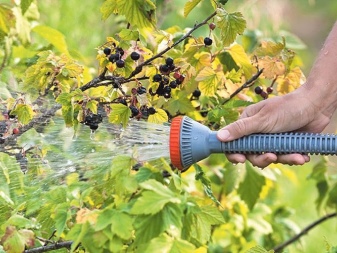
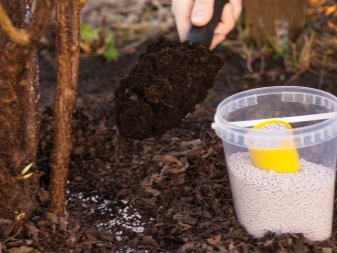
By the way, the most mistakes, and even fatal errors, come out with top dressing. For example, a gardener introduces concentrated humus. This is capable of burning the plant, destroying the vegetation. Only dilute the fertilizer with water, nothing else. Also, premature feeding will be a mistake: the juice in the plant will begin to circulate ahead of time, which means that as soon as the frosts hit, the bush will die. Finally, you cannot be mistaken with the dosage, everything is done strictly according to the instructions. If you oversaturate the currants with fertilizers in the fall, the bush will slow down in development.

Separately, it should be said about the bending of the branches and their shelter for the winter.
- Why it is worth doing: winter may not be mild, and if frosts hit below -25 degrees, the plant will not tolerate this (the risk is great).
- You can bend the branches, press them down with something weighty, the same brick. You can dig in the bent branches with soil, because this is the most natural and affordable insulation.
- And if the bushes are small, they can be easily closed with wooden boxes.... You can also use burlap. But the burlap can be ripped off by the wind, because if the site is a place where they do not live in winter, something more reliable is used for safety.
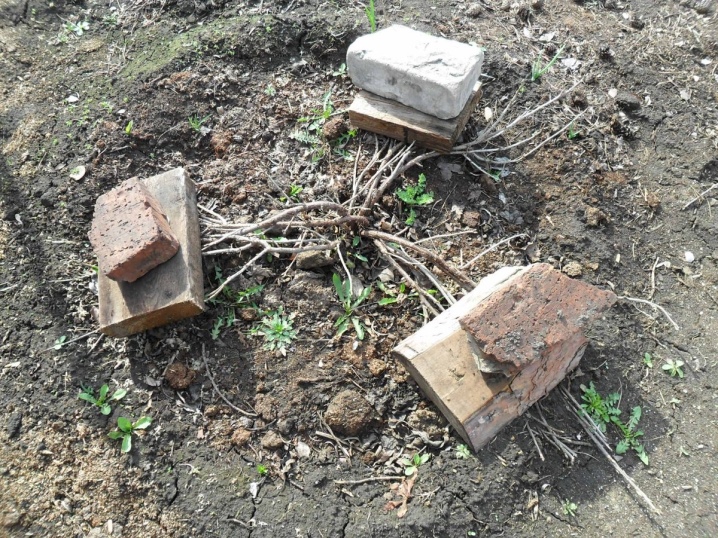
You cannot cut branches with anything (not with garden shears, but with clerical ones, for example). You can't break off... A torn and damaged bush is very problematic in the winter. Pests are just in a hurry to pounce on vulnerable shoots, that is, worries in the new season can only increase. Finally, it is impossible to insulate the shrub with synthetics. Polyethylene film is one of such materials. Air ventilation is called into question, the microclimate under the shelter is disturbed, and this is also fraught with the death of the plant.
But agrofibre, mineral wool, forest foliage, spruce branches, fallen needles will be a good substitute for polyethylene.

The issue of pruning is very voluminous, but by and large not the most difficult. The scheme is simple, feasible without much money and effort, but the result is always there.
Successful garden manipulations and a calm winter for the currants!
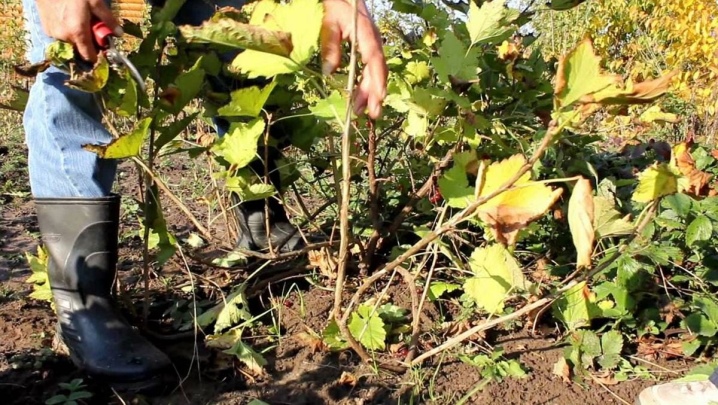













The comment was sent successfully.